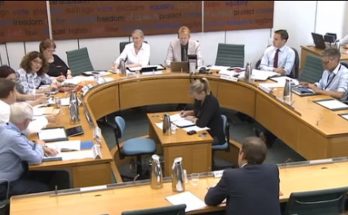The Grenfell tower fire brought the issue of unused property into stark relief as the council failed to respond promptly to rehousing the affected tenants and residents of the tower whilst numerous properties stand empty in Kensington and Chelsea.
This week we will be looking at some of the approaches that are being taken by campaign groups and public bodies to tackle the housing crisis. We will also look at government policy on public land sales and how this relates to the housing crisis.
Oxford Professor Danny Dorling, in his book ‘All That is Solid’ endorses the view that providing decent housing is not as straightforward a matter as ‘build more’. Prof Dorling argues that it is inefficiency in the way we run the housing market that is at the root of the problem. In reality the country has more than enough homes for everyone to have a roof over their head. Dorling’s figures show that in 2011 in England and Wales there were 66 million bedrooms for a population of 55 million. This is not to imply that no house building is needed but that the issue is not as straightforward as may first appear.
From 16 -20 October the Empty Homes campaign group are running their annual ’empty homes week’. We believe that this should be an integral part of any national housing strategy. Bringing empty homes back into use, or creating new homes in unoccupied spaces such as above shops, can be a more effective way of re-generating an area than wholesale redevelopment, which often involves displacement of established communities.
The Empty Homes campaign says,
“In many parts of England the number of long-term empty homes has come down in recent years, however there are still some neighbourhoods where there are persistently high levels. These neighbourhoods are concentrated in the North and Midlands, but are also found in the South, particularly by the coast. (There is a) vicious cycle in which neighbourhoods with high levels of empty homes tend to have higher levels of deprivation and higher levels of poor quality private rented sector housing. (….) In our view the high level of empty homes and poor standard of housing is just as much a part of the housing crisis as the extreme affordability gap in high value areas.”
The Empty Homes Campaign is building ‘a coalition of organisations championing the case for more support from central government, local authorities and others for community-led neighbourhood improvement approaches to tackling empty homes and wider linked issues.’
The Grenfell disaster has shone a spotlight onto the fact that even in central London there are more bedrooms than people. At the same time, across the city hundreds are illegally housed in ‘beds in sheds’, a phenomenon which has been going on for some years.
The government is promoting the sell-off of public land for house building. They estimate that approximately 160,000 new homes can be built on surplus public land owned by all government departments. The New Economics Foundation has launched a campaign around the sell-off because not enough socially rented homes are being created on those sites. The Naylor Review of NHS estates published earlier this year and adopted by Theresa May recommends accelerated sales to raise money for cash strapped Foundation Trusts. There are complex conflicts of interest to examine between the public and private sectors. The private sector, in contrast to the government, could provide some 600,000 homes on land which they currently own.
Theresa May, in her speech to the Conservative Party conference reiterated the government’s policy to make public land available for sale. The housing crisis is top of many people’s agenda. The sale of public land can be made into a popular crusade by those who have a genuine interest in increased social housing, but it also suits the agenda of those seeking to shrink the NHS and the welfare state.




